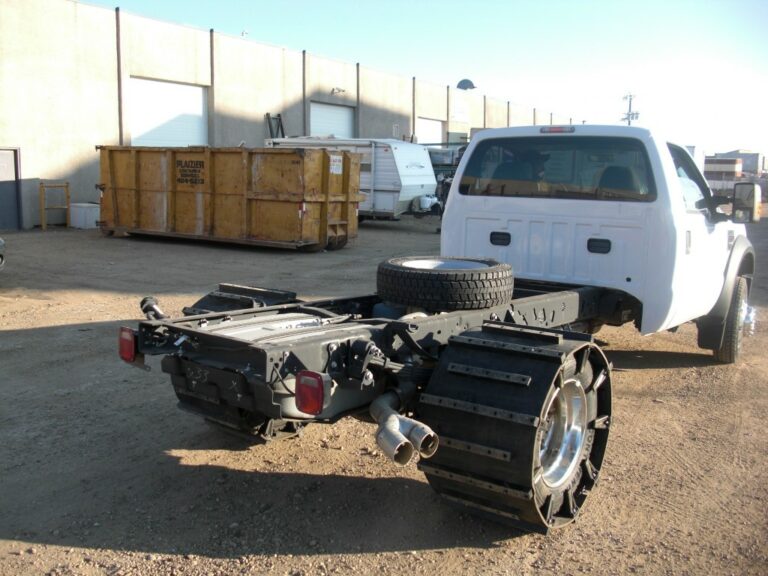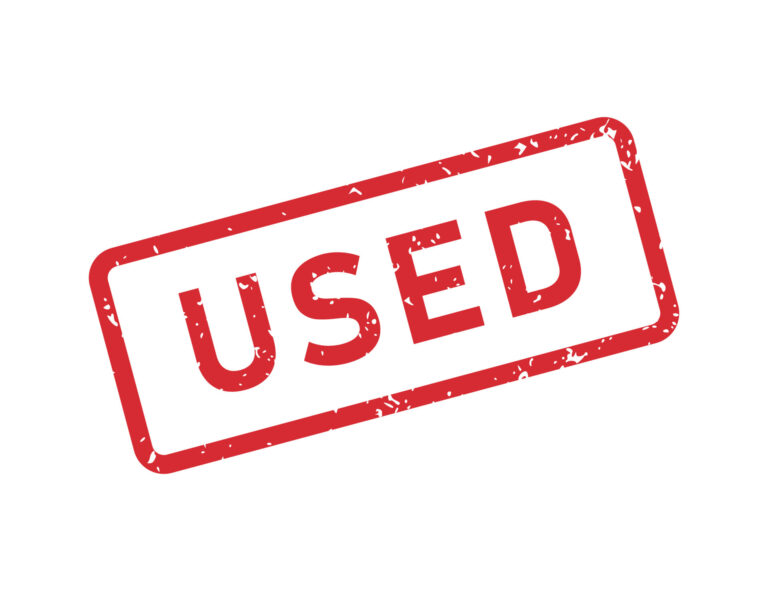Your Trucks For Sale: A Comprehensive Guide to Maximizing Your Sale
Your Trucks For Sale: A Comprehensive Guide to Maximizing Your Sale cars.truckstrend.com
Selling a truck, whether it’s a trusty workhorse that’s served you well or a personal vehicle you’re ready to upgrade, can be a significant undertaking. The phrase "Your Trucks For Sale" encapsulates more than just a listing; it represents the entire journey from deciding to sell to handing over the keys. This comprehensive guide is designed to empower you with the knowledge, strategies, and practical advice needed to navigate the private sale process efficiently, safely, and profitably. From meticulous preparation to shrewd negotiation, we’ll cover every step to ensure your trucks for sale find the right buyer at the best possible price.
The Pre-Sale Checklist: Preparing Your Truck for Market
Your Trucks For Sale: A Comprehensive Guide to Maximizing Your Sale
The first impression is often the most critical. Before you even think about listing your truck, a thorough preparation phase can significantly enhance its appeal and perceived value. This isn’t just about making it look good; it’s about demonstrating care and minimizing potential buyer concerns.
Deep Cleaning and Detailing
A sparkling clean truck suggests it has been well-maintained. Go beyond a simple wash:
- Exterior: Wash, wax, and polish the paint. Clean wheels, tires, and wheel wells. Don’t forget the truck bed!
- Interior: Vacuum carpets, clean upholstery (shampoo if necessary), wipe down all surfaces, clean windows, and remove any personal items. Eliminate odors with air fresheners or professional cleaning.
- Engine Bay: A clean engine bay signals a well-cared-for engine. Carefully degrease and wipe down accessible surfaces.

Mechanical Inspection and Minor Repairs
Addressing minor mechanical issues upfront can prevent them from becoming negotiation points or deal-breakers.
- Basic Maintenance: Perform an oil change, check all fluid levels (coolant, brake fluid, power steering), and top them off. Ensure tires are properly inflated and have adequate tread.
- Address Warning Lights: If any dashboard warning lights are on, get them diagnosed and repaired. Buyers will be wary of unknown issues.
- Small Fixes: Replace worn wiper blades, burnt-out bulbs, or small cracked lenses. These inexpensive fixes make a big difference in perception.
- Consider a Pre-Sale Inspection: A professional inspection report can build buyer confidence and even justify your asking price.
Gathering Essential Documentation
Having all necessary paperwork organized and ready will streamline the sale process.
- Vehicle Title (Pink Slip): This is paramount. Ensure it’s clear of liens.
- Service Records: A detailed history of maintenance and repairs proves the truck has been well-cared for and can add significant value.
- Owner’s Manual: Shows completeness and provides useful information to the new owner.
- Emissions Certificates (if applicable): Have current smog checks ready.
Valuation Mastery: Pricing Your Truck Competitively
Setting the right price is a delicate balance. Price too high, and you deter potential buyers; price too low, and you leave money on the table.
Thorough Market Research
- Online Marketplaces: Browse platforms like AutoTrader, CarGurus, Craigslist, Facebook Marketplace, and local dealer websites for similar trucks (same make, model, year, trim, mileage, and condition) in your area.
- Valuation Tools: Utilize reputable online valuation guides such as Kelley Blue Book (KBB), Edmunds, and NADA Guides. Remember, these are estimates; real-world market conditions may vary.
- Consider Condition and Features: A truck in "excellent" condition with desirable features (e.g., premium trim, 4×4, towing package, low mileage) will command a higher price. Be honest about your truck’s true condition.
Factors Influencing Price
- Make, Model, Year, and Trim Level: Core identifiers of your truck.
- Mileage: Lower mileage generally means higher value, but maintenance history is also key.
- Condition: Exterior (paint, body), interior (upholstery, dash), tires, and mechanical health.
- Features and Upgrades: Aftermarket accessories, specialized equipment, luxury packages.
- Regional Demand: Truck popularity can vary by geographic location.
Setting Your Asking Price
Once you have a good range, decide on your asking price. It’s often advisable to price slightly above your absolute minimum to allow for negotiation, but not so high that it scares away buyers. Be realistic about what the market will bear.
Crafting a Compelling Listing: Attracting Buyers
Your online listing is your truck’s storefront. A well-crafted listing is crucial for attracting serious buyers.
High-Quality Photography
- Clean and Well-Lit: Take photos in good natural light, preferably on a sunny day.
- Multiple Angles: Capture the front, back, sides, interior (dash, seats, cargo area), engine bay, and truck bed.
- Highlight Key Features: Take close-ups of desirable features, tires, and any unique aspects.
- Clean Background: Ensure there’s no clutter or distractions in the background.
- Minimum of 10-15 Photos: The more, the better. Consider a short video walkthrough.
Detailed and Honest Description
- Key Information First: Start with make, model, year, mileage, and key features.
- Highlight Selling Points: Emphasize what makes your truck stand out (e.g., excellent fuel economy for its class, robust towing capacity, recent major maintenance, specific upgrades).
- Maintenance History: Mention recent repairs or regular service.
- Be Transparent: Disclose any known flaws, dings, or issues. Honesty builds trust and prevents wasted time.
- Contact Information: Provide clear instructions on how to reach you.
Choosing the Right Platforms
- Online Marketplaces: AutoTrader, CarGurus, Craigslist, eBay Motors, Facebook Marketplace (often free and wide reach).
- Specialty Forums/Groups: If your truck is a niche model (e.g., classic, off-road build), dedicated forums or Facebook groups can connect you with enthusiasts.
- Local Ads: Community newspapers or bulletin boards might still yield results, especially for older or lower-priced trucks.
Managing Inquiries & Showings: Safety and Professionalism
Once your listing is live, prepare for inquiries. How you handle them can make or break the sale.
Prompt and Clear Communication
- Respond Quickly: Be responsive to emails, texts, and calls.
- Be Knowledgeable: Be prepared to answer questions about the truck’s history, features, and condition.
- Be Transparent: Reiterate details from your listing and be honest about any disclosed flaws.
Safety Precautions for Showings
- Meet in a Public Place: Consider meeting at a busy gas station, shopping center, or police station parking lot, especially if selling privately.
- Bring a Friend: Having someone else with you can provide an extra layer of security.
- Verify Identity (Optional but Recommended): Ask for a photo of their driver’s license (don’t keep it) before a test drive.
- Trust Your Gut: If something feels off, politely decline the meeting.
The Test Drive
- Check Insurance: Ensure your insurance covers others driving your vehicle.
- Accompany the Buyer: Always ride along during the test drive.
- Pre-Planned Route: Have a route in mind that includes various driving conditions (city, highway, turns, braking opportunities).
- Limit Passengers: Keep it to essential individuals (buyer and perhaps one passenger).
The Art of Negotiation: Closing the Deal
Negotiation is an expected part of selling a truck. Approach it with confidence and a clear strategy.
Know Your Bottom Line
Before you start negotiating, determine the absolute lowest price you are willing to accept. This helps you stay firm and avoid making impulsive decisions.
Handling Offers
- Don’t Be Afraid to Say No: Lowball offers are common. Politely decline if it’s too low, or counter with a reasonable offer closer to your asking price.
- Highlight Value: During negotiation, remind the buyer of the truck’s positive attributes, recent maintenance, or desirable features.
- Be Patient: Don’t rush into accepting the first offer.
- Consider Non-Cash Incentives: If the buyer is pushing for a lower price, consider offering a full tank of gas, a spare set of tires (if you have them), or a minor accessory to sweeten the deal.
Be Prepared to Walk Away
If you can’t agree on a price that works for you, be prepared to end the negotiation. There will be other buyers.
The Final Stretch: Paperwork and Ownership Transfer
This is the most critical phase, ensuring a legal and smooth transfer of ownership.
Bill of Sale
A Bill of Sale is essential for both parties. It should include:
- Date of sale
- Names and addresses of buyer and seller
- Vehicle information (make, model, year, VIN, mileage)
- Agreed-upon sale price
- "As-is" clause (if selling as-is, which is typical for private sales)
- Signatures of both buyer and seller (and often a notary, depending on state laws)
Title Transfer
- Sign the The seller must sign the vehicle title to transfer ownership.
- Lien Release: If you had a loan on the truck, ensure the lienholder has released the lien and you have the clear title.
- Notarization: Some states require the title signature to be notarized. Check your local DMV requirements.
Release of Liability
Many states offer a "Notice of Transfer and Release of Liability" form. Fill this out and submit it to your local Department of Motor Vehicles (DMV) as soon as the sale is complete. This protects you from any liability for tickets, accidents, or other issues incurred by the new owner after the sale.
Final Steps
- Remove Personal Items: Double-check the truck for any personal belongings.
- Remove License Plates: In most states, you keep your plates.
- Cancel Insurance: Notify your insurance company that you’ve sold the truck.
Potential Challenges and Solutions
Selling a truck privately can present a few hurdles. Being prepared can help you overcome them.
- Low Interest: If your truck isn’t getting inquiries, re-evaluate your price (is it too high?) and your listing (are photos good, description detailed?).
- Difficult Buyers/Scams: Be wary of unusual payment methods (e.g., overpayment with a cashier’s check and asking for a refund of the difference), overseas buyers who won’t see the truck, or buyers pushing for personal financial information. Stick to secure payment methods (cash, wire transfer directly to your bank, cashier’s check verified by your bank).
- Mechanical Issues Discovered Later: Selling "as-is" generally protects you, but transparency upfront is always best. If a major issue arises immediately after the sale, it can lead to disputes, though legally, the "as-is" clause usually holds.
- No-Shows: It happens. Confirm appointments shortly before meeting. Don’t let it discourage you.
Factors Influencing Your Truck’s Sale Price & Example Price Ranges
This table provides a generalized overview for sellers to understand typical price ranges and key factors that dictate value. These are example ranges for used trucks in good to excellent condition and can vary significantly based on specific market conditions, location, mileage, and exact trim level.
| Truck Category | Typical Used Price Range (Example) | Key Influencing Factors | Common Models (Examples) |
|---|---|---|---|
| Light-Duty Pickups | $15,000 – $50,000+ | Age, Mileage, Trim Level (XL, XLT, Lariat, Denali, etc.), Drivetrain (2WD/4WD), Engine (V6/V8/Diesel), Bed Length, Cab Style (Regular, Extended, Crew), Technology/Safety Features, Aftermarket Mods | Ford F-150, Chevy Silverado 1500, Ram 1500, Toyota Tundra, Nissan Titan |
| Mid-Size Pickups | $10,000 – $40,000+ | Age, Mileage, Trim Level (SR, TRD, ZR2), Drivetrain (2WD/4WD), Engine Size, Off-Road Packages, Towing Capacity, Technology, Condition | Toyota Tacoma, Chevy Colorado, Ford Ranger, Honda Ridgeline, Nissan Frontier |
| Heavy-Duty Pickups | $25,000 – $80,000+ | Age, Mileage, Trim Level, Engine (Diesel vs. Gas), Towing/Hauling Capacity, Dually vs. Single Rear Wheel, Specialized Packages (Snow Plow Prep, Gooseneck), Technology, Work Readiness | Ford F-250/F-350, Chevy Silverado 2500/3500 HD, Ram 2500/3500 |
| Work/Commercial Trucks | $20,000 – $100,000+ | Type of Body (Box, Flatbed, Dump, Service), GVWR (Gross Vehicle Weight Rating), Engine (Diesel), Transmission (Manual/Automatic), Condition of Equipment, Upfitting, Maintenance Records | Ford F-450/F-550, Ram 4500/5500, Isuzu NPR, Hino 195 |
Note: These ranges are illustrative. A brand new, top-trim heavy-duty truck could exceed $90,000, and very old or high-mileage trucks could be significantly less than the lower end of these ranges.
Frequently Asked Questions (FAQ) about Selling Your Trucks
Q1: How long does it typically take to sell a truck privately?
A1: The timeline varies widely based on demand, price, condition, and marketing efforts. It can range from a few days to several weeks or even months. Well-priced, popular models in good condition tend to sell faster.
Q2: Should I sell my truck privately or trade it in at a dealership?
A2: Selling privately almost always yields a higher sale price than trading in. Dealerships need to buy low to resell and make a profit. However, trading in is more convenient and faster, as it avoids the hassle of listing, showing, and paperwork. If maximizing profit is your goal, private sale is usually better.
Q3: What documents do I absolutely need to sell my truck?
A3: The most critical document is the vehicle title (pink slip), which must be clear of any liens. It’s also highly recommended to have a Bill of Sale, service records, and a current emissions certificate if required in your state.
Q4: How do I handle payment safely?
A4: For private sales, the safest payment methods are cash (for smaller amounts, verify authenticity), a cashier’s check (verify its legitimacy with the issuing bank before handing over the truck and title), or a direct wire transfer to your bank. Avoid personal checks, money orders, or unusual online payment platforms. Complete the transaction at your bank if possible.
Q5: Do I need to get a pre-sale inspection for my truck?
A5: While not legally required, a pre-sale inspection by a certified mechanic can be a powerful selling point. It shows transparency and gives buyers confidence, potentially justifying your asking price and leading to a faster sale. If you’re selling "as-is," it’s even more beneficial to have documentation of the truck’s current condition.
Q6: What if the buyer wants to take the truck for a pre-purchase inspection themselves?
A6: This is a common and reasonable request from serious buyers. You can agree, but ensure you accompany the truck to the mechanic or arrange for the mechanic to come to you. Never let the truck leave your possession without full payment.
Conclusion
Selling "Your Trucks For Sale" doesn’t have to be a daunting task. By meticulously preparing your vehicle, researching the market to set a competitive price, crafting an attractive listing, and approaching the sales process with professionalism and caution, you can achieve a successful and profitable sale. Remember, transparency and honesty build trust, while attention to detail ensures a smooth transaction. With this guide, you’re well-equipped to navigate the complexities of selling your truck, turning a potentially stressful experience into a rewarding one. Good luck, and may your truck find its perfect new home!





